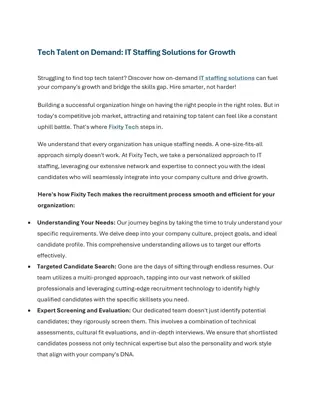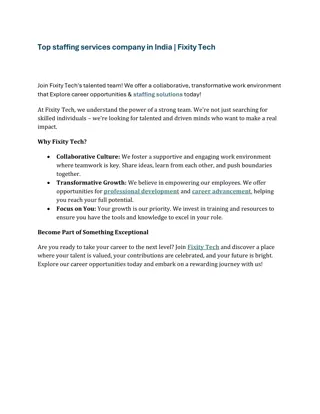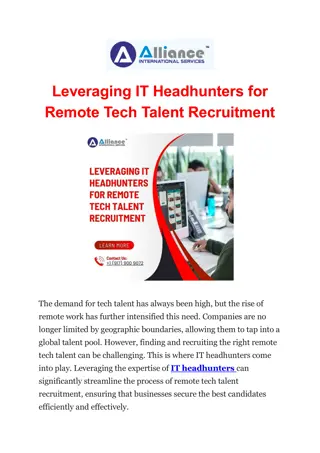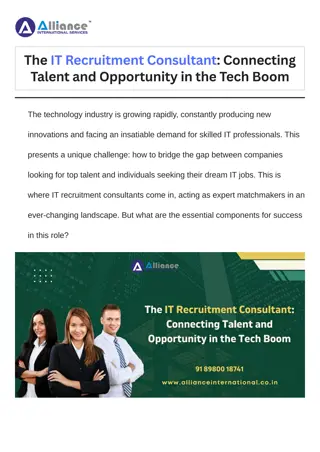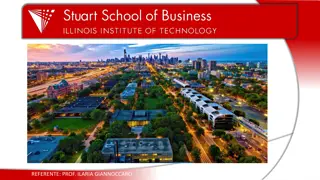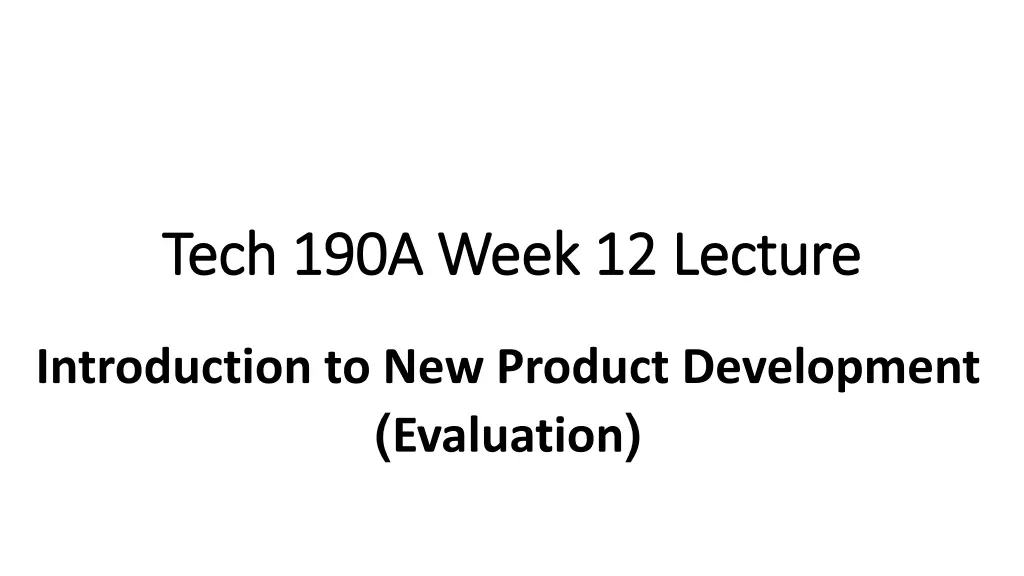
Intelligent Knowledge Management Strategies for Breakthrough Innovations
Explore the importance of knowledge management in fostering breakthrough innovations, including customer engagement, technology applications, and key strategies like discovery, incubation, and acceleration. Learn about leveraging knowledge management tools for intelligent decision-making and innovation success.
Download Presentation

Please find below an Image/Link to download the presentation.
The content on the website is provided AS IS for your information and personal use only. It may not be sold, licensed, or shared on other websites without obtaining consent from the author. If you encounter any issues during the download, it is possible that the publisher has removed the file from their server.
You are allowed to download the files provided on this website for personal or commercial use, subject to the condition that they are used lawfully. All files are the property of their respective owners.
The content on the website is provided AS IS for your information and personal use only. It may not be sold, licensed, or shared on other websites without obtaining consent from the author.
E N D
Presentation Transcript
Tech 190A Week Tech 190A Week 12 12 Lecture Lecture Introduction to New Product Development (Evaluation)
Evaluation: Checks the design against the original specifications Often requires construction of a prototype to test for conformance Often employs rapid prototyping technique
Questions in Prototype Evaluation: Is this what we designed? Does it meet specifications? Does it work? Is the customer satisfied? Does it meet all our expectations?
Chapter 13: Knowledge Management as Intelligence Chapter 13: Knowledge Management as Intelligence Amplification for Breakthrough Innovations Amplification for Breakthrough Innovations Knowledge management (KM) has its origin in information technology. Business decisions involve information and knowledge, not merely data. Traditional knowledge management came to be viewed as a function of dealing with acquisition, utilization, and dissemination of knowledge. However, the fussy front end of innovation cannot benefit from the traditional KM.
Chapter 13: Knowledge Management as Intelligence Chapter 13: Knowledge Management as Intelligence Amplification for Breakthrough Innovations Amplification for Breakthrough Innovations One of the ways companies use to introduce breakthrough innovations is to engage customers directly to understand a deep- seated problem, find solutions, develop new products and services, and get to the market in time. Another approach is based on identifying applications for advanced emerging technologies that enable new solutions to interesting problem.
Chapter 13: Knowledge Management as Intelligence Chapter 13: Knowledge Management as Intelligence Amplification for Breakthrough Innovations Amplification for Breakthrough Innovations Three strategies required for breakthrough innovations are: 1. Discovery 2. Incubation 3. Acceleration
Chapter 13: Knowledge Management as Intelligence Chapter 13: Knowledge Management as Intelligence Amplification for Breakthrough Innovations Amplification for Breakthrough Innovations Knowledge management tools for intelligent leveraging: 1. Codification and dissemination of explicit data or data that can be digitized 2. Transfer of tacit data 3. Tools to identify individuals with knowledge
Chapter 13: Knowledge Management as Intelligence Chapter 13: Knowledge Management as Intelligence Amplification for Breakthrough Innovations Amplification for Breakthrough Innovations Five key functions that are part of knowledge amplification 1. Information arbitrage 2. Customer engagement 3. Visualization 4. Fail fast 5. Application migration
Chapter 13: Knowledge Management as Intelligence Chapter 13: Knowledge Management as Intelligence Amplification for Breakthrough Innovations Amplification for Breakthrough Innovations Knowledge management and selected tools for breakthrough innovation 1. Idea jams 2. Technology translation tables 3. Technology market mind maps 4. Incubation 5. Customer immersion labs including visual and interactive simulation 6. Rapid prototyping 7. Acceleration 8. Usage sensors




